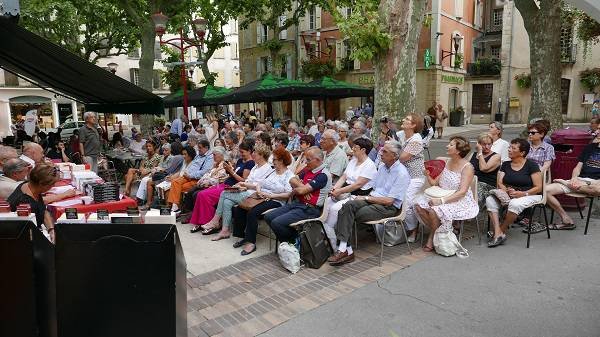23 août 1305, exécution de William Wallace
août 23, 2025 | by Jean-Claude JUNIN

Chevalier écossais né vers 1270 et mort le 23 août 1305. Il est l’une des principales figures de la résistance écossaise contre l’Angleterre durant les guerres d’indépendance de l’Écosse.
Aux côtés d’Andrew de Moray, Wallace défait une armée anglaise à la bataille du pont de Stirling en septembre 1297. Il est nommé Gardien de l’Écosse et sert jusqu’à sa défaite à la bataille de Falkirk, en juillet 1298. En août 1305, Wallace est capturé à Robroyston, près de Glasgow, et remis au roi anglais Édouard Ier, qui le fait pendre, tirer et mettre en quartiers pour haute trahison et crimes contre des civils anglais.
Après sa mort, Wallace devient une icône dont la renommée dépasse les frontières de l’Écosse. Le poète du XVe siècle Harry l’Aveugle lui consacre une épopée en vers, The Wallace, et il devient le héros de romans de Walter Scott et Jane Porter au XIXe siècle. En 1995, il est incarné par Mel Gibson dans le film Braveheart, qui prend d’importantes libertés avec son histoire.
Scottish knight born around 1270 and died August 23, 1305. He was one of the main figures of Scottish resistance against England during the Wars of Scottish Independence.
Alongside Andrew de Moray, Wallace defeated an English army at the Battle of Stirling Bridge in September 1297. He was appointed Guardian of Scotland and served until his defeat at the Battle of Falkirk in July 1298. August 1305, Wallace was captured at Robroyston, near Glasgow, and handed over to English King Edward I, who had him hanged, shot and quartered for high treason and crimes against English civilians.
After his death, Wallace becomes an icon whose fame goes beyond the borders of Scotland. The 15th century poet Harry the Blind devoted an epic in verse to him, The Wallace, and he became the hero of novels by Walter Scott and Jane Porter in the 19th century. In 1995, he was played by Mel Gibson in the film Braveheart, which took significant liberties with its story.

William Wallace apparaît dans l’histoire en assassinant William de Heselrig, shérif anglais de Lanark, pour venger la mort de sa bien-aimée (nommée Marion Braidfute selon la tradition). En raison de ce crime, il est mis hors la loi et se réfugie dans les bois où il est bientôt rejoint par une trentaine de compagnons avec lesquels il massacre la garnison anglaise de Lanark (en mai 1297). C’est le signal de la rébellion. De grands seigneurs ne tardent pas à se joindre à lui : William Douglas, qui devient son lieutenant, Robert Wishart, évêque de Glasgow qui parvient à rallier James Stewart le Grand Sénéchal à la cause, et bientôt Robert Bruce le Jeune rompant par-là la réputation d’anglophilie de la famille Bruce. Et c’est avec une armée que Wallace met le siège devant Dundee au mois d’août 1297. John de Warenne, comte de Surrey, et Hugh de Cressingham, trésorier, réagissent et placent leur troupe à Stirling coupant ainsi Wallace de ses arrières.
William Wallace rompt alors le siège et se dirige vers Stirling. Mais lorsqu’il arrive, les Anglais sont déjà solidement positionnés et plus nombreux — 6 350 fantassins et 350 cavaliers contre 2 300 fantassins dotés de lances et 180 cavaliers écossais. La situation semble désespérée pour les Écossais qui parviennent cependant à profiter de la maladresse d’un chevalier anglais qui souhaitait engager le combat prématurément. À la suite de ce renversement de situation, les Anglais perdent 3 000 hommes dont Hugh de Cressingham et plus de 100 chevaliers. La victoire écossaise est éclatante.
William Wallace appears in the story by assassinating William de Heselrig, English sheriff of Lanark, to avenge the death of his beloved (named Marion Braidfute according to tradition). Because of this crime, he is outlawed and takes refuge in the woods where he is soon joined by about thirty companions with whom he massacres the English garrison of Lanark (in May 1297). This is the signal for rebellion. Great lords are not long in joining him: William Douglas, who becomes his lieutenant, Robert Wishart, bishop of Glasgow who manages to rally James Stewart the Grand Seneschal to the cause, and soon Robert Bruce the Younger thereby breaking the Anglophile reputation of the Bruce family. And it was with an army that Wallace laid siege to Dundee in August 1297. John de Warenne, Earl of Surrey, and Hugh de Cressingham, treasurer, reacted and placed their troops in Stirling, thus cutting off Wallace from his rear.
William Wallace then broke the siege and moved towards Stirling. But when he arrived, the English were already solidly positioned and more numerous — 6,350 infantry and 350 cavalry against 2,300 infantry with lances and 180 Scottish cavalry. The situation seems hopeless for the Scots who nevertheless manage to take advantage of the clumsiness of an English knight who wanted to engage in combat prematurely. Following this reversal of the situation, the English lost 3,000 men including Hugh de Cressingham and more than 100 knights. The Scottish victory is brilliant.

Quelques villes ne tardent pas à ouvrir leurs portes, dont Aberdeen, Dundee, Perth, Stirling, Édimbourg, Roxburgh et Berwick. Wallace dirige en octobre-novembre 1297 des campagnes qui le mènent jusque dans le Cumberland et le Northumberland, tout en faisant régner l’ordre dans les territoires sous son pouvoir. Il est proclamé avant mars 1298 « gardien du royaume d’Écosse ». Édouard Ier doit intervenir en personne, abandonnant un temps le continent — où il appuyait les Flamands contre la France — pour reprendre le contrôle de l’Écosse. Il reprend Berwick en juillet 1298, puis Roxburgh. Il parvient à couper le chemin de Wallace à Falkirk. L’armée écossaise y est écrasée le 22 juillet 1298 : 2 000 morts. C’est la fin de l’épopée de Wallace…
A few cities soon opened their doors, including Aberdeen, Dundee, Perth, Stirling, Edinburgh, Roxburgh and Berwick. Wallace led campaigns in October-November 1297 that took him as far as Cumberland and Northumberland, while maintaining order in the territories under his power. He was proclaimed before March 1298 « guardian of the kingdom of Scotland ». Edward I must intervene in person, abandoning the continent for a time – where he supported the Flemings against France – to regain control of Scotland. He took over Berwick in July 1298, then Roxburgh. He manages to cut Wallace’s way to Falkirk. The Scottish army was crushed there on July 22, 1298: 2,000 dead. It’s the end of the Wallace epic…

William Wallace doit abandonner son titre de gardien du royaume entre juillet et décembre 1298. Il passe quelque temps en France avec d’autres chevaliers écossais à l’automne 1299 ; en novembre 1300, le roi de France Philippe IV envoie même pour lui une lettre de recommandation au pape. William Wallace réapparaît en Écosse aux alentours de 1303-1304 où il reprend sa vie de hors-la-loi. Il est capturé près de Glasgow le 3 août 1305 par les hommes de sir John de Menteith, le gardien du château de Dumbarton qui, comme la plupart des nobles écossais, avait fait sa soumission au roi d’Angleterre.
William Wallace est transféré à Londres le 22 août 1305 et condamné à mort pour haute trahison envers son souverain, crimes et sacrilège. Le lundi 23 août 1305 il est emmené en procession sur un cheval jusqu’à Westminster Hall et exécuté à l’âge de 35 ans. Mais au lieu de saper l’esprit de liberté chez les Écossais, cette exécution va vivifier le sentiment nationaliste écossais, et d’autres hommes se sont dressés contre l’Angleterre, en particulier Robert Bruce. En 1314, les Écossais, sous le commandement de Robert Bruce, qui s’était rallié les nobles et proclamé roi d’Écosse le 25 mars 1306, défont l’armée anglaise à la bataille de Bannockburn, et assurent, à la fin de la guerre, l’indépendance de l’Écosse en 1328.
William Wallace had to relinquish his title as guardian of the kingdom between July and December 1298. He spent some time in France with other Scottish knights in the autumn of 1299; in November 1300, the King of France Philippe IV even sent a letter of recommendation to the pope for him. William Wallace reappears in Scotland around 1303-1304 where he resumes his life as an outlaw. He was captured near Glasgow on August 3, 1305 by the men of Sir John de Menteith, the guardian of Dumbarton Castle who, like most Scottish nobles, had submitted to the King of England.
William Wallace was transferred to London on August 22, 1305 and sentenced to death for high treason against his sovereign, crimes and sacrilege. On Monday August 23, 1305 he was taken in a procession on a horse to Westminster Hall and executed at the age of 35. But instead of undermining the spirit of freedom among the Scots, this execution will invigorate Scottish nationalist sentiment, and other men have risen up against England, in particular Robert Bruce. In 1314, the Scots, under the command of Robert Bruce, who had rallied the nobles and proclaimed King of Scotland on March 25, 1306, defeated the English army at the battle of Bannockburn, and ensured, at the end of the war, Scottish independence in 1328.

RELATED POSTS
View all


